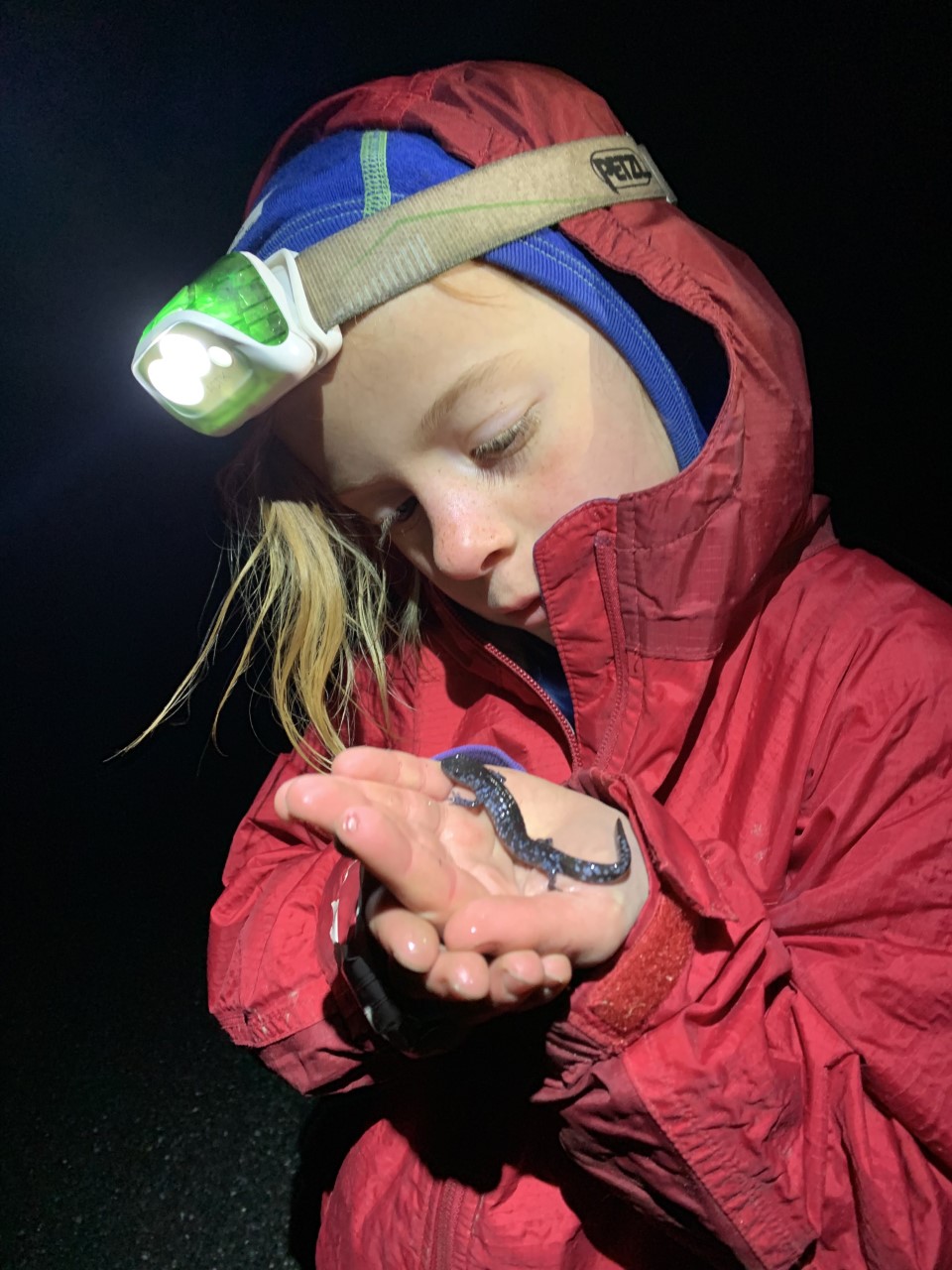Cornwall volunteer teams have been out on West Street beginning in 2019 and again in ’21, ’22 and ’23, ensuring the safe migration of salamanders and frogs from their forested winter hibernating areas on the east side of the road to feeding and breeding wetlands and ponds to the west. Each year (mid-March to mid-April) on rainy spring nights when temperatures stay above 40 degrees in the evening, this amazing movement of amphibians happens en masse. In spots like West Street, their migration is made treacherous by roads they must cross -- roads with fast moving cars and trucks!

Beginning in Spring 2019, Cornwall volunteers began working on West Street, slowing early-evening traffic and ensuring the safe passage of hundreds of salamanders and frogs. Spring peepers and wood frogs have been the predominant early crossers with blue-spotted and Jefferson salamanders moving a little later. In 2023, when several early-evening weather conditions were good, Kristi Tolgyesi, Lise Anderson, and Mary Dodge led the hearty volunteer teams in assisting over 200 amphibians in their safe crossing.
The Conservation Commission shares its crossing count with North Branch Nature Center in Montpelier. They collect migration data from the entire State and make it available to town planners and ecologists. To learn more about amphibian migration and road monitoring, check out their video: “Amphibian Road Crossing Volunteer Train and Ecology”

Since spring 2019, Cornwall volunteers have been monitoring two stretches of road on West Street. On rainy evenings when temperatures have stayed above 40 degrees, escorts have been out slowing traffic and ensuring the safe passage of hundreds of salamanders and frogs. If you would like to learn more about these escort teams and possibly help in Cornwall during the spring migration period, contact CC member Mary Dodge at mdodge@middlebury.edu

